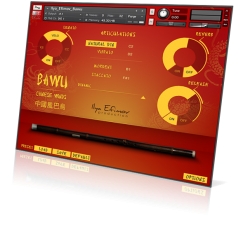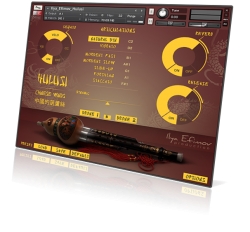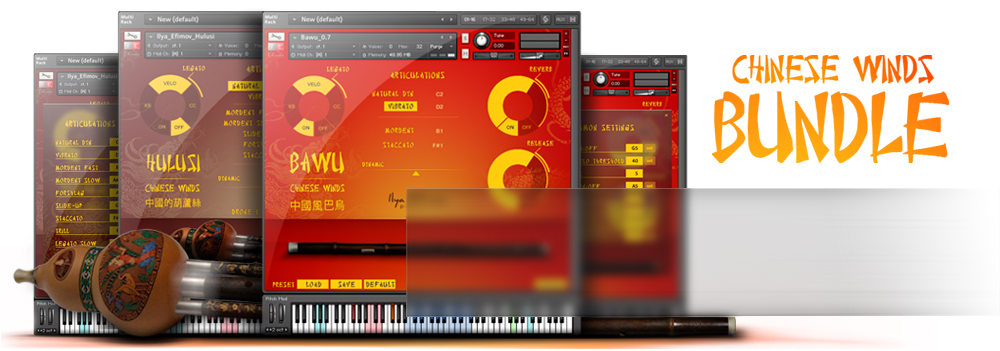BAWU
 The bawu is a Chinese wind instrument. Although shaped like a flute, it is
The bawu is a Chinese wind instrument. Although shaped like a flute, it is
actually a free reed instrument, with a single metal reed. It is played in a transverse
(horizontal) manner. It has a pure, clarinet-like timbre and its playing technique
incorporates the use of much ornamentation, particularly bending tones.
The bawu likely originated in the Yunnan province of southwest China, it has become
a standard instrument throughout China, used in modern Chinese compositions
for traditional instrument ensembles.
Although the bawu is still predominantly performed in China, it has in recent
years been adopted by European composers and performers. Rohan Leach from
England, Raphael De Cock from Belgium, and Herman Witkam from the Netherlands
have all taken the instrument in new directions. The musician Guo Yue, who
now resides in England, has long promoted the instrument and plays it on all of his
recordings.
Our bawu library will allow you to imitate virtually that a real bawu could
play. We recorded intervals for up and down legato articulations in two variants:
normal legato and glissando. We have provided the ability to vary the dynamics
of the instrument to convey a wide, detailed range of expression from pp to ff.
Natural vibrato may be added to the sound at any time. Staccato articulations
provide added realism by means of a round-robin algorythm. Users can reassign
keyswitches and midi-controllers, then save the changes to a user preset. Default
settings are easily restored at any time.(See “Preset” section).
HULUSI
 The hulusi or cucurbit flute is a free reed wind instrument from China. It is held
The hulusi or cucurbit flute is a free reed wind instrument from China. It is held
vertically and has three bamboo pipes which pass through a gourd wind chest;
the center pipe has finger holes and the outer two are typically drone pipes. It is
not uncommon for a hulusi to have only one drone pipe while the second outer
pipe is merely ornamental. The drone pipe has a finger hole, which allows it to be
stopped. Advanced configurations have keyed finger holes similar to a clarinet or
oboe, which can greatly extend the range of the hulusi to several octaves.
The hulusi was originally used primarily in Yunnan province by the Dai ethnic group
who call it "bilangdao" and other ethnic-minority groups of southern China, but
has gained nationwide popularity throughout China, similar to the popularity of
the harmonica in the West, and "improved" versions have been produced outside
of the indigenous realms. Like the related free reed pipe called bawu, the hulusi
has a very pure, clarinet-like sound.
Although the hulusi is still predominantly performed in China, it has in recent
years been adopted by European composers and performers. Rohan Leach from
England, Rapheal De Cock from Belgium and Herman Witkam from the Netherlands
have all taken the instrument in new directions.
Our hulusi library will allow you to imitate virtually that a real hulusi could
play. We recorded intervals for up and down legato articulations in two variants:
normal legato and glissando. We have provided the ability to vary the dynamics
of the instrument to convey a wide, detailed range of expression from pp to ff.
Natural vibrato may be added to the sound at any time. Staccato articulations
provide added realism by means of a round-robin algorythm. Users can reassign
keyswitches and midi-controllers, then save the changes to a user preset. Default
settings are easily restored at any time.(See “Preset” section).


